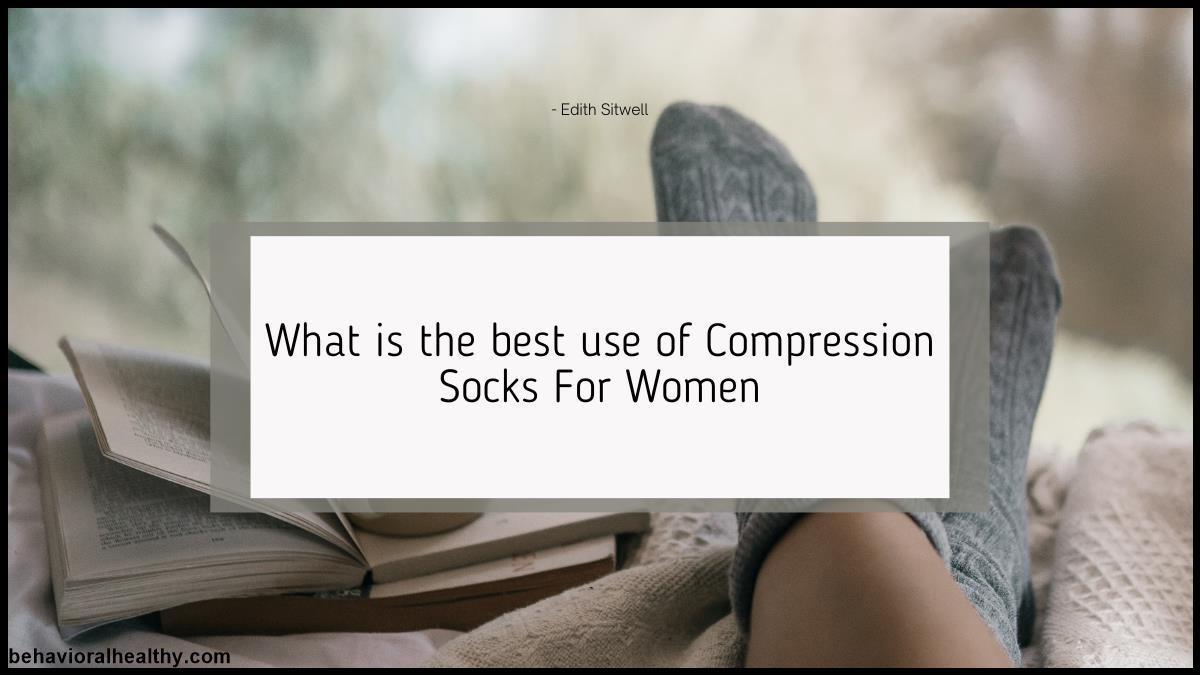Compression socks for women have become more and more popular today. Many women are wearing these socks for medical purposes.
Table of Contents
How to Properly Wear Compression Socks for Women
Compression socks for women have become more and more popular today. Many women are wearing these socks for medical purposes. But these socks also help with everyday comfort and performance in sports.
Whether you are a nurse who stands all day, a business traveler, or an athlete looking for improved recovery, it’s important to know how to properly wear compression socks for women and how to get the most benefit out of these performance socks. This complete guide includes everything you need to know about how to wear compression socks correctly.
Understanding Compression Socks for Women
Compression socks for women are specially designed garments that offer graduated pressure on your lower legs, where the highest amount of pressure is at the ankles and gradually lessens further up your leg. This stress difference aids blood circulation to the heart.
It reduces swelling, prevents varicose veins, and relieves aches and pains from prolonged standing or sitting. Unlike the average pair of socks, the solution to compression socks is the right approach to wearing and maintaining them.
How to Wear Compression Socks for Women Properly
Let’s start with the basics. The right way to put on compression socks for women will make all the difference in comfort and effectiveness.
Get the Right Size and Compression
The primary and most important thing is the size. If your socks are too tight, they can pinch and make your feet ache; if they’re too loose, they won’t work as you need them to.
- Mild (8-15 mmHg): Perfect for daily use and mild distension.
- Moderate (15–20 mmHg): Good for travel, pregnancy, and standing jobs.
- Firm (20–30 mmHg): Firm, which is said to help control mild varicosities or lower-level venous disorders (consult a physician).
- Extra Firm (30–40 mmHg): For severe medical symptoms (recommended by a doctor only).
Take the measurements around the thinnest part of your calf and ankle, the widest part of your thigh, and the length of your leg.
Put Them On in the Morning
The perfect time for wearing compression socks is when you wake up before swelling begins. Your legs are usually at their smallest in the morning, so the socks are easier to slide into and feel more comfortable throughout the day.
How to Put Them On Without a Struggle
Getting compression socks on can be a little tough at first, but here’s how it works:
- Put your foot inside and pull the sock carefully over your heel.
- Slowly pull the sock up your thigh, avoiding wrinkles or binding.
- Use rubber gloves or a sock aid, if necessary, to create more control.
- Pulling and stretching too much is unnecessary, especially around the top band.
Ensure They Are Placed Right
Compression socks, too, should be snug but not painful. The heel portion should rest snugly at your heel, and the toe area should lie flat without pinching your toes. The top should rest below the knee unless you’re rocking a thigh-high or full-length stocking.
Wear Them Consistently
To be most effective, wear them daily, especially if treating a health condition, such as during pregnancy. Daily wear can greatly improve leg health for some professions, such as those that involve standing or sitting for a long time.
Common Mistakes to Avoid
- Rolling or folding the upper band puts a tourniquet-like pressure on the vessel. That effect can cut off the circulation.
- Wrinkled Socks: Wrinkled socks can generate pressure points and skin irritation.
- Moisturizing Before Wearing: Applying moisturizer to the legs makes wearing socks difficult and ineffective.
- Pulling at the Top Only: Pulling the socks to the top causes the cloth to stretch and tear.
- Improper Size: A fit that is too snug can obstruct circulation, and one that is too loose will be non-productive.
When Should You Wear Compression Socks
- Compression socks are necessary during long periods of sitting or standing, such as for office workers, nurses, and flight attendants.
- Compression socks are required while traveling, especially on flights longer than 4 hours.
- Compression socks are necessary for pregnant women to relieve swelling.
- Compression socks are needed for on-- and post-exercise execution and recovery.
- Compression socks are required after surgery to prevent blood clots, as directed by your provider.
Care and Maintenance Tips
Follow the tips below to use your socks effectively for a longer period.
- Wash after every wear to keep things as good as new and elastic.
- Wash them manually with detergent and cold water.
- Dry flat away from direct heat sources
- Get at least two pairs to alternate while one is being washed.
- Replace with normal use every 3-6 months, as elasticity reduces over time.
End Note
When worn properly, compression socks for women offer improved circulation and reduced leg fatigue. You can wear your socks comfortably and successfully when they are applied correctly and with the proper compression level to fit your needs.
Remember that while compression therapy works for many things, it's always a good idea to talk to a doctor before beginning it, particularly if you have other health issues. Wearing the right pair of compression socks and using the right technical approach can improve your daily performance, mobility, mood, and energy.

